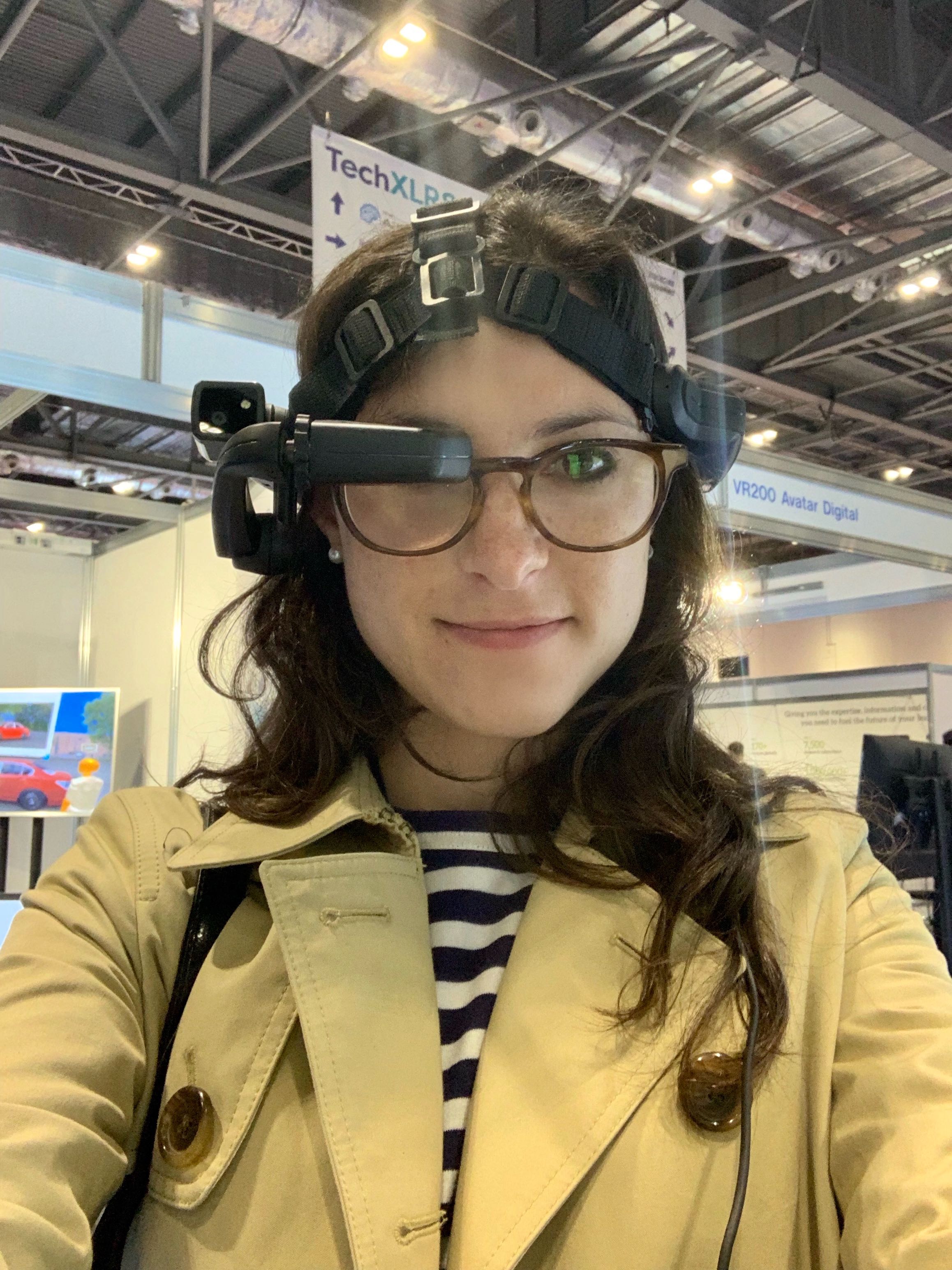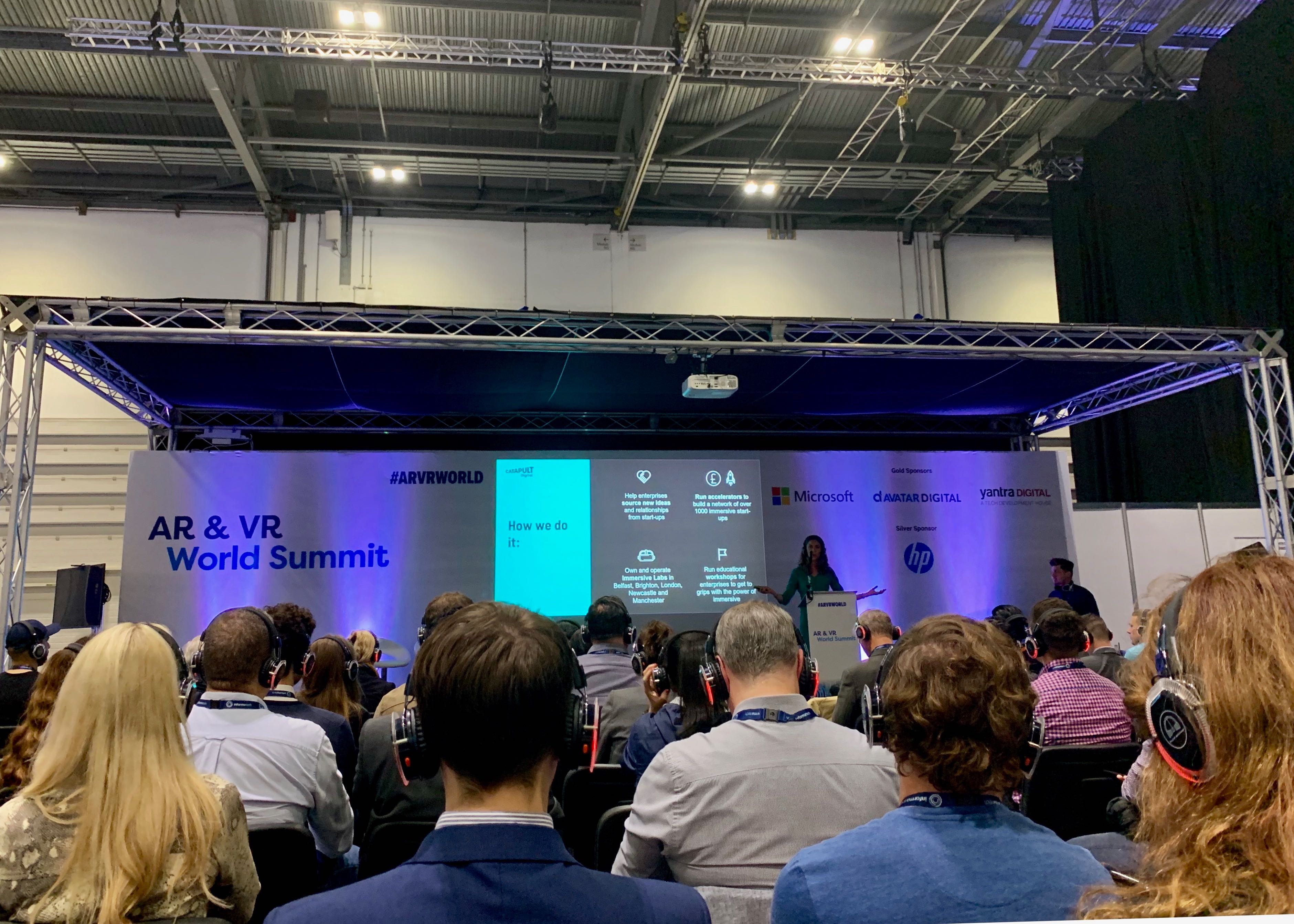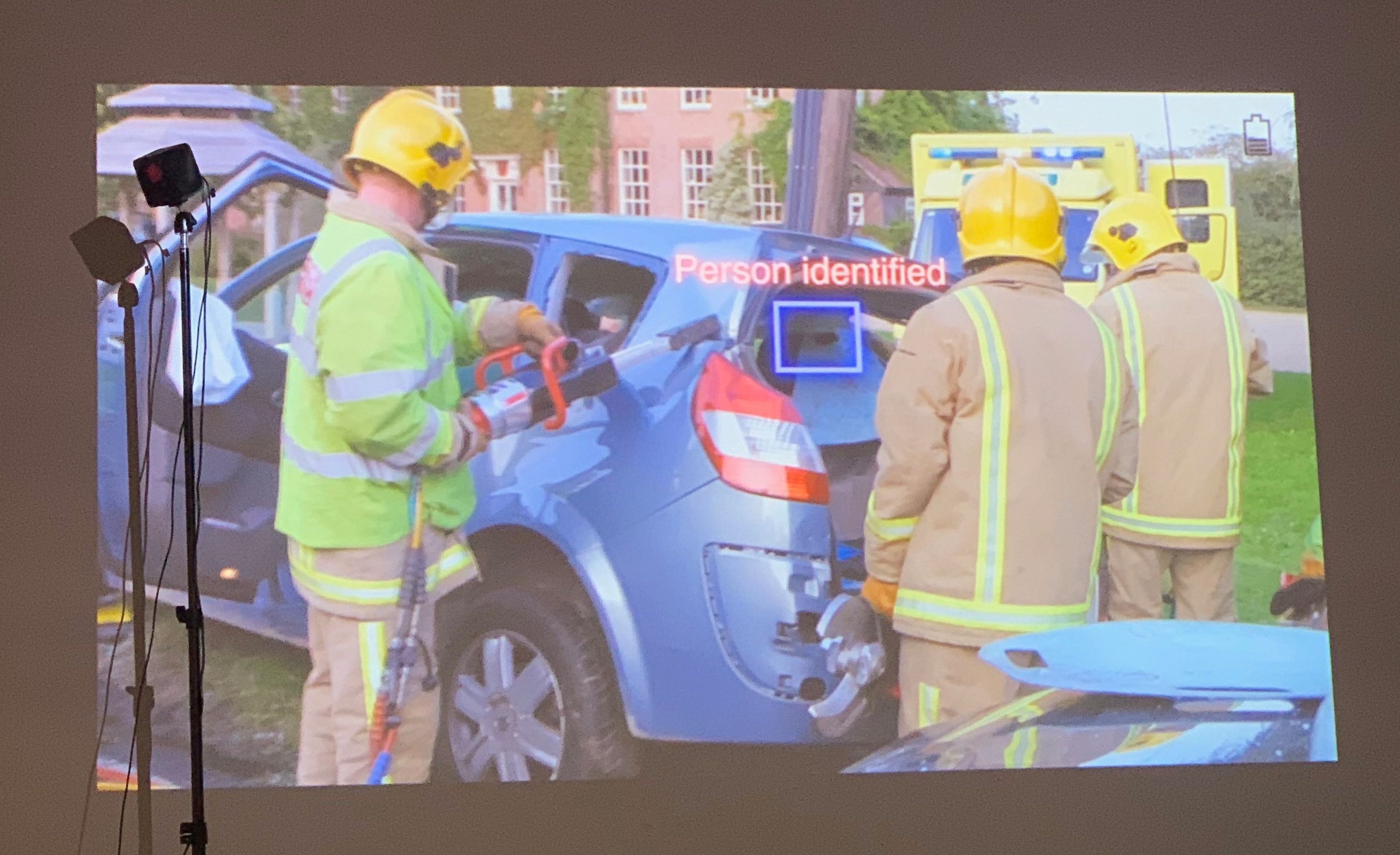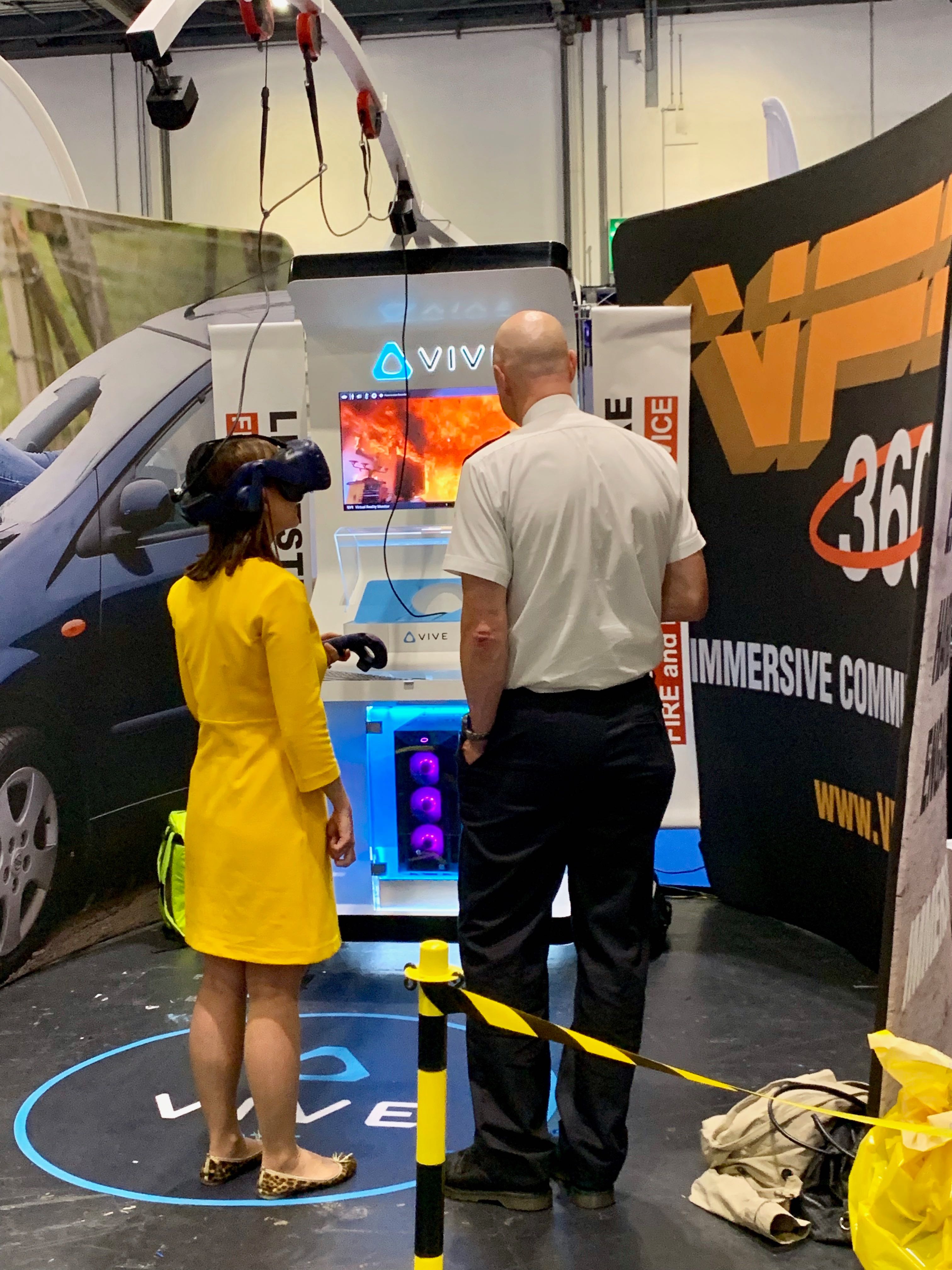I attended the 2019 AR & VR World Summit at TechXLR8, London’s largest tech festival, with the hope of understanding more about how companies are using augmented and virtual reality technologies to improve how they work and how they are creating the workers of the future.
Over the course of two days, I listened to tech leaders from various industries including Jaguar Land Rover, Lockheed Martin, General Electric, and Xerox talk about how they are using these new technologies. I had the opportunity to demo tethered (HTC Vive, HP Z VR Backpack) and untethered (XpertEye headsets, Samsung Gear, Homido Grab VR headset) AR and VR experiences.
With so much to digest, I’d like to break down three areas where virtual and augmented reality solutions have become critical: in training/education, production, and maintenance.
Training & Education
Mixed reality is changing the way people experience the world by simulating familiar environments and digitally adding contextual knowledge on top of legacy systems in the physical world. While virtual reality is ideal for immersing oneself in a physical environment, AR is a more practical hands-on learning tool.
Currently, the key driver of augmented reality technology is the camera. AR headsets and smartphone apps scan a user’s environment and then render data on screen in context. This gives people access to information that they would not normally have, which helps them make more informed decisions. In the context of training, AR offers modern-day contextual cheat sheets for trainees practicing difficult tasks in the real-world (see image below). These technologies can be utilized in a wide range of industries including healthcare/medicine, law enforcement and other task forces, engineering, and more.
With virtual reality, organizations can simulate high-risk experiences such as entering a burning building, analyzing a delicate crime scene, or performing a medical procedure. By creating these realistic environments that can be replayed and modified as needed, trainees are able to engage more deeply with material, develop muscle memory with repetition, as well as learn from their mistakes, without the real-world consequences. As a result, VR is monumentally impacting knowledge retention rates among professionals requiring hands-on training. HP found that using VR in medical training improved “professional training retention rate after one year by 80%” over traditional methods “due to more visual and immersive content.”
In addition to helping employees become more equipped in their fields, virtual reality can help foster empathy that will ultimately impact product decisions. Being able to virtually put oneself in another’s shoes (to a certain extent), can be valuable in understanding a user/customer’s perspective, and therefore help designers and developers build more user-centric, thoughtful products. In this way, VR has the potential to drastically impact the way that designers and product teams conduct research and develop strategies.
Production & Maintenance
Augmented and virtual reality are changing the way products are designed, tested, and manufactured. Of course 3D rendering is not an entirely new tool for industrial design, however, virtual reality has helped take processes to the next level, in many cases eliminating the need for physical prototypes altogether. Companies can now reuse components across different products and manipulate models more fluidly than ever before.
Modelling in VR makes it much easier to visualize, and therefore, test concepts early on in the product life cycle, thus encouraging more agile design processes. By moving away from traditional waterfall methodologies, companies are creating better products in less time for less money. Historically, it was critical for vehicle manufacturers to build physical prototypes before going into production. Not only were these hard to build, but they were also difficult to change. Virtual reality has changed that by allowing manufacturers to virtually design and service products and push the boundaries of engineering and design.
VR has allowed for more accurate industrial product design for spaces in which there are specific physical constraints and requirements. Allowing someone to sit down in the simulated space and test out performing all of the necessary functions before building leads to more accurate spatial modelling and better end products. Thanks to VR, both production and maintenance are smoother with remote monitoring and support with digital twins (digital replicas/counterparts of physical products).
In addition to streamlining the design and production processes, modelling in VR enables manufacturers to provide long term support for products by researching and testing on digital twins and then offering remote assistance to customers. Remote assistance support has also been a key driver for incorporating AR headsets into field worker processes, especially when it comes to working with older systems (e.g. technology found in hospitals, telecommunications). An engineer can wear the headset (which is essentially a camera that allows customer service agents/colleagues to see what the wearer is seeing) and get audible and visual help in real time to solve problems.

AR and VR technologies are disrupting traditional strategies and fostering agile workflows in large corporations that previously relied on physical processes. With these new technologies, companies are saving time, money, and other resources, enhancing knowledge retention rates in industries requiring hands-on training, and easing frustrations and streamlining support for field workers interfacing with legacy systems...and this is just the beginning.
If you'd like to hear more about our work in immersive, say Hi at hello@ustwo.com


